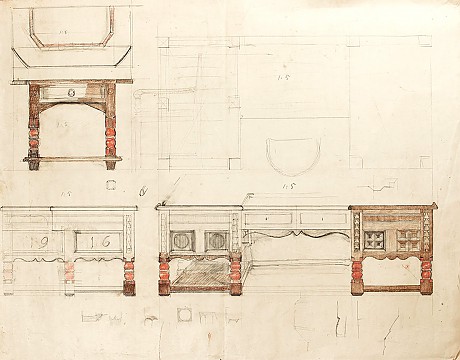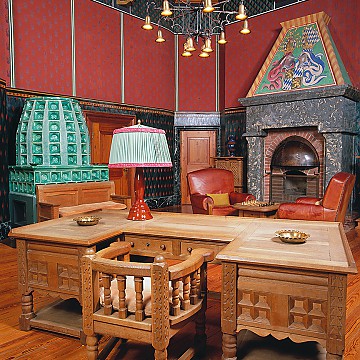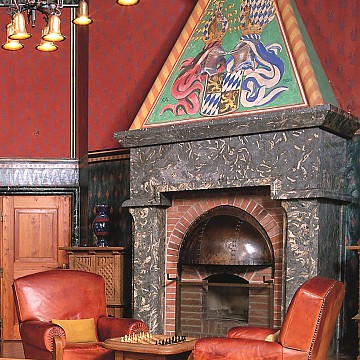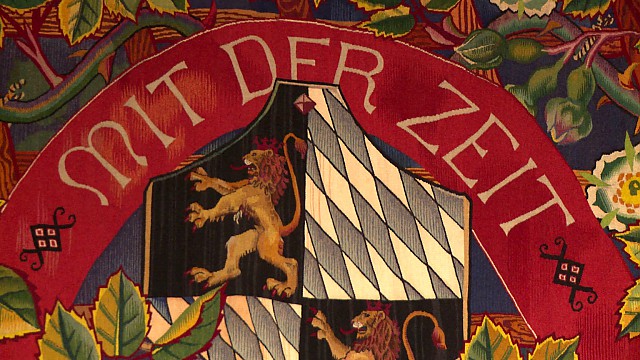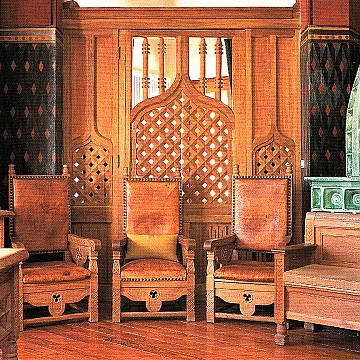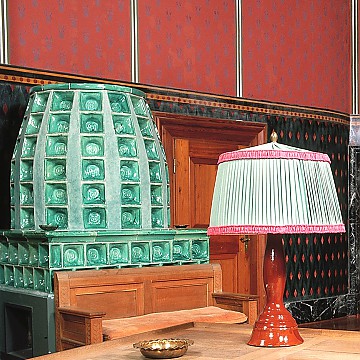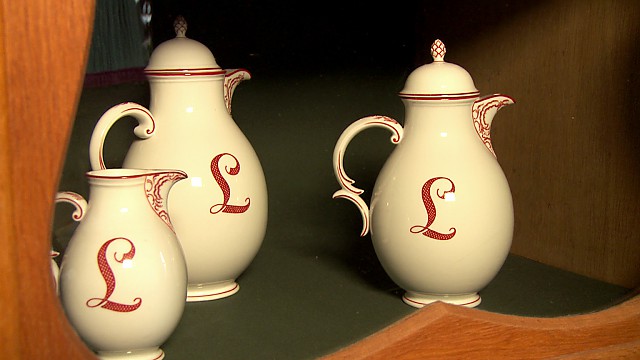Duke's
Study
– 4 –
Gothic elements, oriental influences and Art Deco combine to produce a total work of art
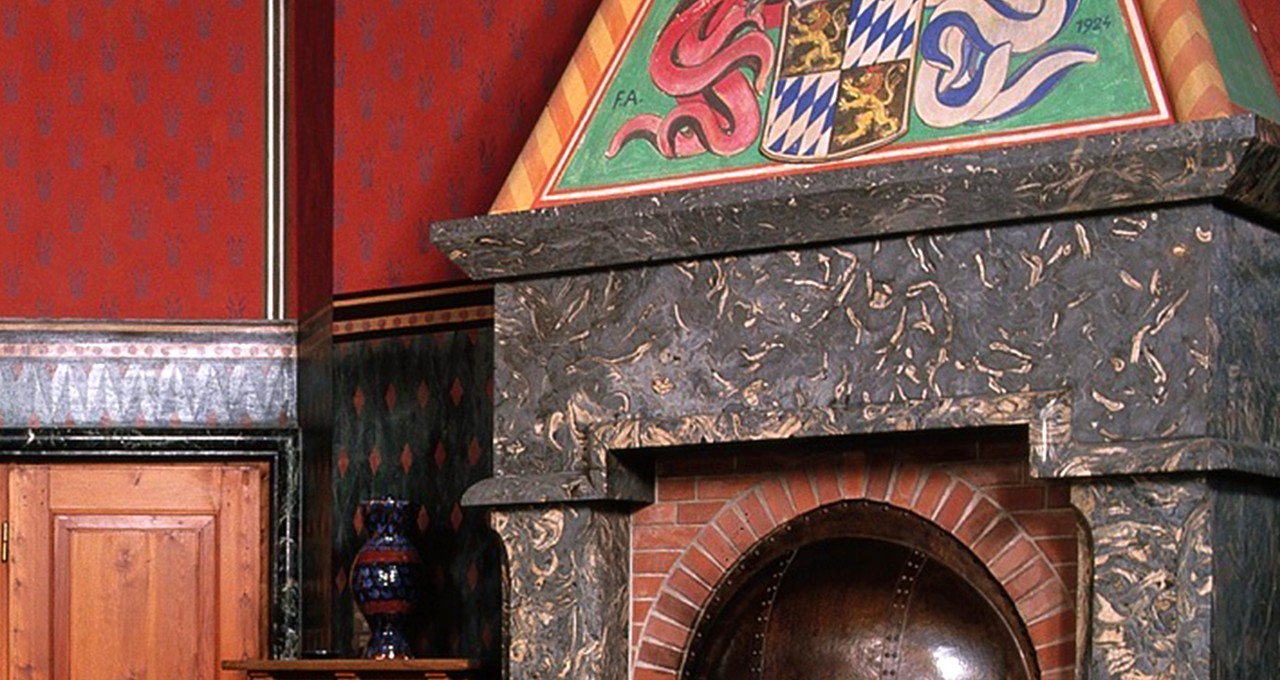
ABOUT
The Duke's Study was the first room in the castle to be completed. During the First World War, Friedrich Attenhuber created a unique room ensemble in 1915/16. Decorative elements from the late Gothic period, the Renaissance, Art Nouveau, Art Deco and oriental motifs are combined to create a historicising overall impression.
On his many journeys, the Duke looked for prototypes which could be incorporated into his building and spatial plans. For example, the wood-beamed ceiling, the fireplace and the tiled stove as well as the various multi-coloured walls resemble designs at Gruyère Castle in Switzerland.
The colourfulness of the room painted in red and green rhomboidal diamond shapes reflects the aesthetic taste of Art Nouveau. Attenhuber also received clear instructions on this. In a letter dated 18 November 1915, the Duke wrote: »Brown and yellow seems almost better than green to me – we have a fondness for autumn colours. (..) In any event, continue in this vain, the room will benefit greatly in warmth from both the doors and the carpets ...«.
Friedrich Attenhuber increasingly became a generalist, thereby designing the room's entire furnishings and the walls. As a painter, Attenhuber was aware of his limitations and felt under pressure by the Duke's demands. In response to Attenhuber's doubts, the Duke wrote: »Great masters from other periods have designed beautiful furniture, so you will also succeed, you great artist.« (Letter dated 21.10.1915)
To the left of the entrance door a striking marble fireplace rises upward. The slanting smoke hood is adorned with the ducal coat of arms as a fresco. The two bulky leather armchairs with the quadratic chess table form an inviting ensemble for players. Attenhuber created the seating furnishings from the perspective of an artist who focused more on the effect of colour within the space and less from the perspective of a furniture designer.
The imposing, substantial writing desk draws the observer's eye almost magnetically. The stalwart spoke back chair resembles a throne and seems to symbolise Luitpold's preeminent status. The harem window is clearly reminiscent of the Duke's visit to Egypt. It is designed as a double-leaf swing door next to the tiled stove.
In this room, Friedrich Attenhuber designed the tiled stove, fireplace, the desk lamps, as well as the two painted lidded ceramic vases and the idiosyncratic electric smoke neutraliser. The designs were realised by the Tegernsee-based ceramics manufacturer Ulbricht.
The furnishings and irregular floor plan are what make the Duke's Study unique. Only the Art Deco style opulent ceiling lighting with brass bells and the wrought-iron suspension bracket are found in other rooms of the castle.
The Study's wide range of styles with some bulky, rustic furniture was intended to represent a specific new German style, which set a trend before 1914. However, this style failed to establish itself internationally.
